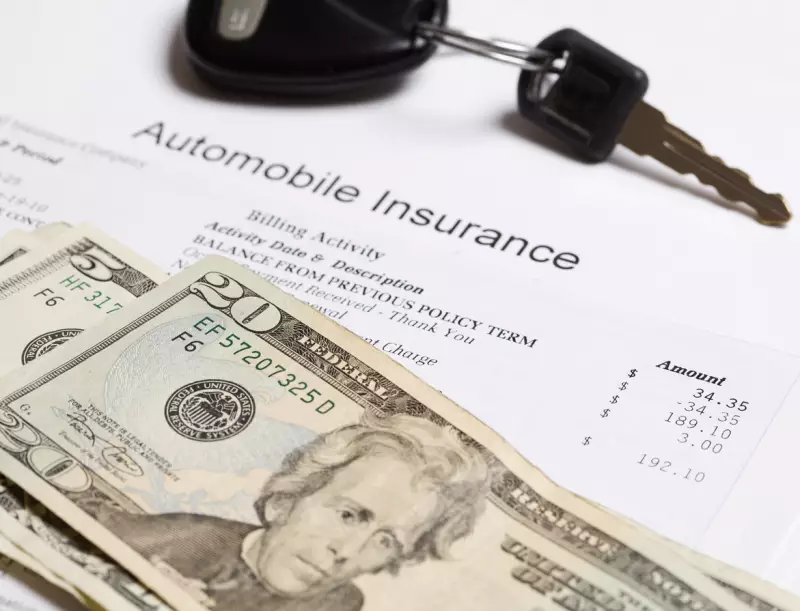According to data from the Bureau of Transportation Statistics (BTS), a division of the U.S. Department of Transportation, more than 40,000 vehicular accidents resulted in deaths in 2020. Moreover, more than 2 million people visited emergency departments due to accidents. These accidents account for $430 billion in medical costs.
These statistics show that auto insurance is critical to a driver's coverage. With full coverage car insurance, vehicle owners are protected from unexpected medical costs. Despite its necessity, full coverage auto insurance, a non-legal term for insurers, is rarely understood.
Thus, knowing what full coverage car insurance entails for drivers is critical in protecting their vehicles and finances. This article explains the concept of full coverage insurance, what it usually includes, and how it works.
What Is Considered Full Coverage Insurance?
In the latest National Association of Insurance Commissioners (NAIC) survey, 49% of Gen Z respondents have automobile coverage.
However, only 22% understand the importance and the intricacies of auto insurance coverage. This gap in understanding highlights the need for clearer guidance on the various types of coverage available.
One key aspect of auto insurance is full coverage, which offers extensive protection for the policyholder and their vehicle. While the exact components may vary between insurers and policies, full coverage often includes a combination of liability, collision, and comprehensive coverage.
Some policies may include additional protections such as uninsured/underinsured motorist coverage, personal injury protection, or medical payments coverage.
However, despite the term "full," the insurance doesn't cover everything. Many policies exclude certain scenarios from coverage.
For instance, routine maintenance, normal wear and tear, and aftermarket modifications are typically not covered under full coverage insurance. Additionally, personal belongings inside the vehicle, custom paint jobs, or high-end sound systems may require separate coverage.
What Does Full Coverage Car Insurance Consist Of?
Many insurers combine several types of auto insurance in full coverage car insurance, which generally consists of the following elements:
Liability Insurance
This insurance is a legal requirement in most states. It protects you financially if you're at fault in an accident that causes injury or property damage to people. It usually consists of bodily injury and property damage.
Bodily injury liability covers medical expenses, lost wages, and legal fees if you injure someone in an accident. On the other hand, property damage pays for damage you cause to another person's vehicle.
The liability insurance does not cover your medical expenses and property damage as the policyholder.
Collision Insurance
While collision insurance is not legally required, vehicle owners are encouraged to include it in their full coverage insurance. According to Statistica, drunk driving and speeding are two of the main reasons for vehicular accidents in the U.S.
Although you may be a responsible driver, you can't control how others drive their cars. However, you can prevent unwanted financial crises with collision insurance under your full car coverage.
Collision coverage pays for repairs to your vehicle if it's damaged in a collision with another vehicle, regardless of who's at fault. It's valuable for newer or more expensive vehicles that may result in significant repair costs after the accident.
The coverage typically comes with a deductible, the amount you pay out of pocket before your insurance kicks in.
Comprehensive Insurance
According to the National Highway Traffic Safety Administration (NHTSA), vehicle theft is the leading non-collision-related incident. It has increased by 25% in the past years and accounts for more than 1 million stolen vehicles.
With comprehensive insurance, you can protect yourself and your property from theft and other related incidents. Also known as "other than collision" coverage, comprehensive insurance protects your car from these incidents:
- Theft
- Vandalism
- Fire
- Natural disasters (e.g., floods, hurricanes, earthquakes)
- Falling objects (e.g., tree branches)
- Damage from animals
Other Insurance Coverages
Beyond these three core components, full coverage auto insurance often includes additional protections to provide even more comprehensive coverage:
- Uninsured/underinsured motorist covers an accident with a driver who has no insurance or insufficient coverage to pay for your damages and injuries.
- Personal injury protection (PIP) or medical payments pay for medical expenses for you and your passengers, regardless of who was at fault in the accident.
- Rental car coverage pays for a rental car while your vehicle is being repaired due to a covered claim.
- Roadside assistance can help with issues like flat tires, dead batteries, or lockouts.
- Guaranteed asset protection (GAP) insurance pays the difference between your car's actual cash value (ACV) and the amount you still owe on your loan or lease if your car is totaled.
Note that 14 states require uninsured/underinsured motorists as part of full coverage car insurance before you can register a vehicle and legally drive it without incurring violations. Moreover, 15 states mandate PIP for motorists.
How Does Full Coverage Insurance Work?

Full coverage insurance is beneficial in several scenarios, such as:
- Major accidents that cause significant damage to your vehicle
- Vehicle theft
- Severe weather damage from natural disasters like hailstorms, floods, or hurricanes
- Single-vehicle accidents
- Vandalism or malicious damage, such as a broken window
- Animal collisions
When it’s time to claim under your full coverage auto insurance policy, the process typically includes the following:
Reporting the Incident
After an accident, theft, or damage to your vehicle, your first step is to report the incident to your insurance provider. Many insurers offer multiple ways to do this, including phone hotlines, mobile apps, or online portals.
You may also need a police report as proof. Acquiring a police report may vary depending on the procedures of the police department in your state.
Assessing the Damage
Once you've reported the incident, an adjuster assesses the damage in your vehicle and determines the cost of repairs. This may involve inspecting the vehicle in person, reviewing photos you've submitted, or working with a repair shop to get an estimate.
Processing Your Claim
Based on the adjuster's assessment and the specifics of your full coverage insurance, your insurer processes your claim. They determine which coverage applies (liability, collision, or comprehensive) and calculate the payout amount.
Paying Your Deductible
If your claim falls under collision or comprehensive coverage, you must pay your deductible. Deductibles can range from a few hundred to several thousand dollars, depending on your full coverage auto insurance policy. The insurance company then covers the remaining cost of repairs up to your policy limits.
Reimbursing or Paying Your Claims
Depending on your insurer and the specifics of your claim, the insurance company may pay the repair shop directly, or they may reimburse you after you've paid for the repairs.
In cases where repair costs exceed the vehicle's value, the insurer may offer a settlement based on the ACV of your vehicle.
Is Comprehensive Insurance Full Coverage?
While comprehensive insurance is a core component of full coverage auto insurance, it's not the entirety of it. Comprehensive insurance only covers specific events like theft, vandalism, and natural disasters but doesn't protect you from collisions or liability damage.
For full coverage car insurance, you need comprehensive, collision, and liability coverage combined.
How Much Does Full Coverage Car Insurance Cost?

The cost of full coverage insurance varies widely based on several factors:
- Driver's age and driving history
- Vehicle make and model
- Location
- Selected coverage limits and deductibles
As of 2024, the national average cost for full coverage auto insurance is $2,026 per year or $169 monthly. However, this can vary significantly based on individual circumstances.
To lower the cost of full coverage auto insurance, consider:
- Bundling policies with the same insurer
- Raising your deductibles that you can afford
- Maintaining a clean driving record
- Taking advantage of available discounts
While full coverage car insurance provides extensive protection, you must still assess whether it meets your needs. Always review your policy details carefully and consult your insurance provider to ensure you have the right coverage.








![Best Sites to Check a Car’s History [2025 Review]](https://media.infopay.net/thumbnails/K8lMeG2QLjE46LPqZlmoi6SunKKdT5qvlaRZk6e1.webp)










![Best Sites to Check a Car’s History [2025 Review]](https://media.infopay.net/thumbnails/K8lMeG2QLjE46LPqZlmoi6SunKKdT5qvlaRZk6e1-w356.webp)
